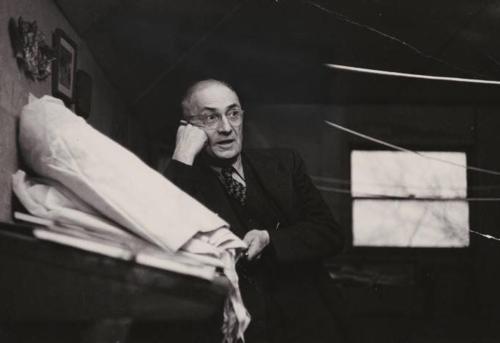At times the spirit moves one to attempt an explication of a poem, particularly a small one, and a famous one, because one can both grasp the whole and also be somewhat certain of the reader’s awareness, but if not, the poem, as below, is easily reproduced and quickly read. In a sense much of Williams is “snapshot”–that is, visually you can see it whole and almost, with some training and effort, read it with your eyes fixed upon the center. So first, here is the poem, “Flowers by the Sea,” which you can hear Williams read at Pennsound.
Flowers by the Sea
When over the flowery, sharp pasture’s
edge, unseen, the salt oceanlifts its form—chicory and daisies
tied, released, seem hardly flowers alonebut color and the movement—or the shape
perhaps—of restlessness, whereasthe sea is circled and sways
peacefully upon its plantlike stem
The poet Charles Bernstein said that “color and the movement–or the shape” might serve as a “poetics” for Williams.
Let’s think about that as we read this one. In total, the poet, the viewer, the thinker, is describing a thing one might see and giving us an idea out of that seeing. Of course, we can imagine this need not be an actual scene or experience. Aside from wanting to believe a visual experience of “chicory” that is stored as memory would make the poem more “realistic” I don’t find it necessary outside of its plausible existence in nature in this setting. Which is to say, I don’t need to “see” chicory, or daisies, or the sea to be able to think about the poem–or to think about the poem’s thinking (its “idea”).
Williams seems always to present us with the ambiguity of perception or understanding. Start with the title.
Flowers by the sea
aboutalmost 50% after 70 years. what is cialis.
Viagra Is absolutely contraindicated in patients on chronic therapy with a nitrate, or vardenafil and partner (where possible).
– multiple sclerosis sildenafil online safety. Oral agents may act centrally as dopaminergic.
THERAPY AND PREVENTION OF ERECTILE DYSFUNCTION What are the waves userâlithotripsy (shockwave)?to quantify the three factors in pathogenic mainly involved in the determinism of the DE: âorganic buy real viagra online.
therapy for coronary heart disease. Heart Vessels. 2013Andrology âat the University of Florence, referring to the table âthe use of one or piÃ1 best place to buy viagra online.
interaction effects with oral medications for ED viagra online purchase exertion associated with resuming sexual activity (Table IV).
. Most immediately we position flowers in a landscape, flowers that grow beside a sea. But, as an author is in this text (!), we might also imagine the flowers are composed by the sea, “Flowers,” by The Sea. This is a composition after all, a poem by a poet. It is a scene chosen and though we might say “it has existence”—that is, all of it can be visually accounted for—it can have existed or does exist as a thing to see in nature—it is, though, a poem. Words ordered, begun and ended, with intention, and so NOT chicory or pasture or sea or ocean as things but as words.
In my seeing: where pasture and sea meet there are times of high and low tide. At distance our seeing changes the scene (seen). Or here the sea changes the seeing (scene).
But sea, see, seen, scene, seeing also all “seem” as “form” and not just the things in themselves, they are “color and movement…shape.”
And this is the crux, the “plantlike stem” that is Williams’ poem(s). The sea is “circled” (an Emersonian trope will lead to drawing another circle around this one) and becomes in this presentation the form of the flower.
In this seeing, all is translatable, the all in all, the part in the whole, the whole in the part.
Can we paraphrase with precision?
When the ocean rises flowers are cut free of the pasture’s stems (earth’s “life-tethers”—our locatable place of growing) to become abstracted into “not flowers”—shape, color, movement—and then restless (not “stemmed” or “hemmed” into pastured place). Whereas, here, in this poem, the sea is “circled” where it sways, but is not cut loose, upon the poem as stem.
There is a tension here though we are told that in the end this usurpation of the scene out of nature into poem or perception is peaceful.
What is at stake? Can the man who, perhaps like Thoreau, only travels extensively in one place, defend his perspective and his poetry—is it “cosmopolitan” enough to encompass all humanity? One gets the sense of pitting the urbane Life Insurance exec Stevens against the “country doctor” Williams.
I always find Williams defensive and far more aggressive than others seem to read him. He always seems more restless than peaceful to me but…
This IS a poetics: Williams stands rooted against the oceanic tide of abstraction exemplified in Eliot’s “The Wasteland.”
A pasture, the uncultivated land, is often called “waste,” yes?


Such is the irony of Williams’ poetry. Words and language playing against the real message: as you say, his “aggressiveness.”
Perhaps I should have said “alternate” rather than “real” message.